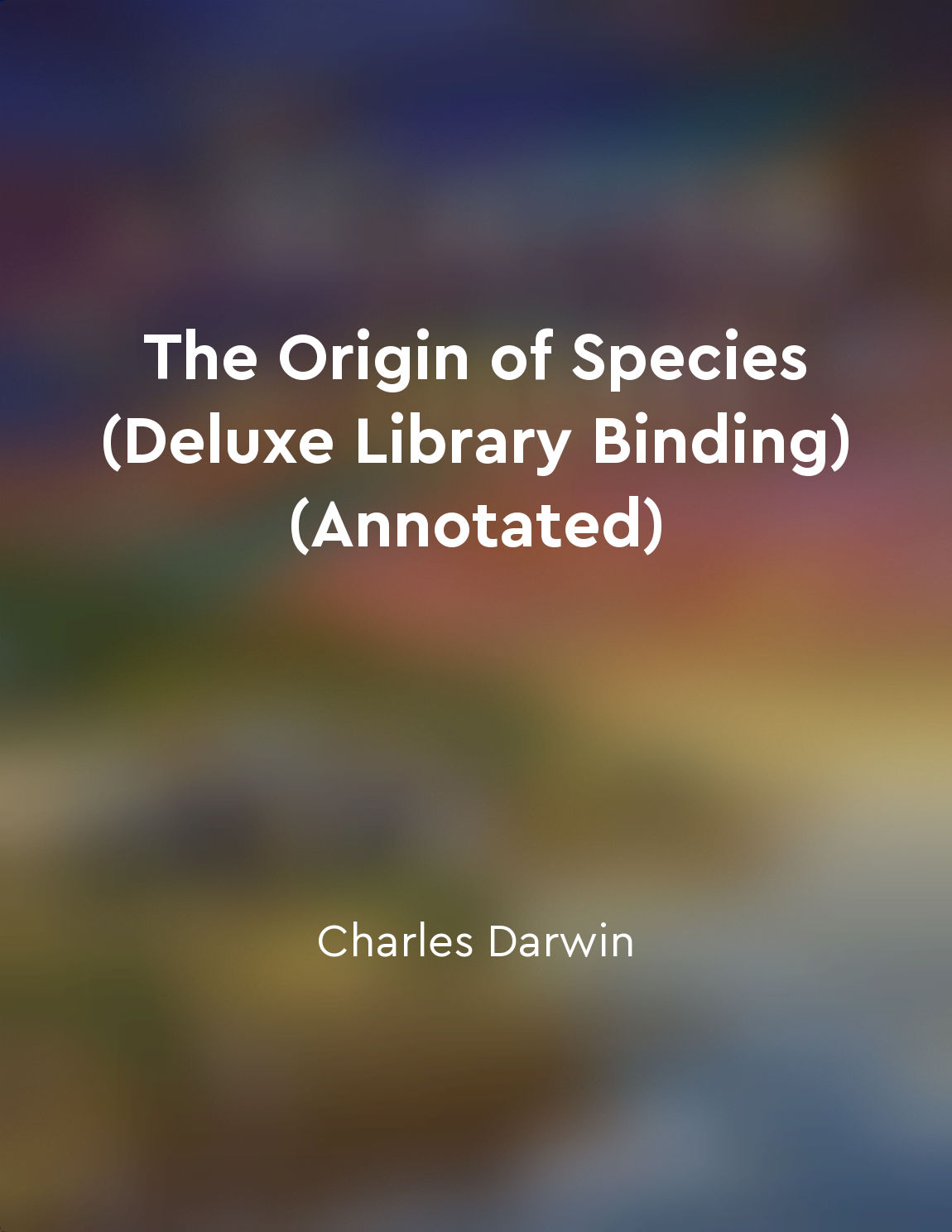Common ancestry links species from "summary" of The Origin of Species (Deluxe Library Binding) (Annotated) by Charles Darwin
The idea that all living organisms are connected through a common ancestry is a fundamental concept in the study of evolution. This theory suggests that all species, no matter how different they may seem, can trace their origins back to a single common ancestor. This means that all living things are ultimately related in some way, sharing a common history that stretches back through millions of years of evolutionary change. Through the process of natural selection, species have adapted to their environments over time, leading to the vast diversity of life forms that we see today. While individual species may appear distinct and separate from one another, they are all part of a larger family tree that links them together through shared genetic material and evolutionary history. By examining the similarities and differences between different species, scientists can uncover clues about their shared ancestry and evolutionary relationships. For example, anatomical features, genetic sequences, and fossil records can all provide evidence of common ancestry between species that may seem unrelated at first glance. Understanding the concept of common ancestry can help us make sense of the incredible diversity of life on Earth and how different species are interconnected through a shared evolutionary past. By recognizing our shared origins with other species, we can gain a deeper appreciation for the interconnectedness of all life forms and the processes that have shaped the natural world over millions of years.- The concept of common ancestry serves as a unifying principle in the study of evolution, highlighting the ways in which all living organisms are connected through a shared history of genetic and evolutionary change. Through this framework, we can better understand the relationships between different species and appreciate the beauty and complexity of the natural world.
Similar Posts
Inspiring others through your actions
The idea that our actions can inspire others is a powerful one. When we live our lives in alignment with our values and beliefs...
NCERT Solutions provide comprehensive explanations and practice questions
The NCERT Solutions for Science Class X are designed to offer students a thorough understanding of the concepts covered in the ...

Our existence is just a fraction of cosmic time
In our brief time on this planet, we often forget the vastness of the cosmos. Our existence is but a mere blip in the grand sch...
Pursuit of scientific breakthroughs
The pursuit of scientific breakthroughs is a relentless endeavor that consumes the minds of researchers and scientists alike. I...

Faith should not be seen as a virtue
In the eyes of many believers, faith is considered a virtue. It is often seen as a positive quality, something to be admired an...
We must rethink migration as a positive force for society
Migration is often viewed through a negative lens, associated with problems such as overcrowding, job scarcity, and social tens...
Religious beliefs lead to harmful and divisive behavior
Richard Dawkins argues that religious beliefs often result in harmful and divisive behavior. This is evident in the numerous in...
DNA is the genetic material in all living organisms
The discovery that DNA is the genetic material in all living organisms was a groundbreaking moment in the field of biology. Thi...
Plant physiology involves the study of plant functions and processes
Plant physiology delves into the intricate workings of plants, exploring their various functions and processes. One of the key ...
Neurons transmit electrical signals in the body
Neurons are the basic building blocks of the nervous system. They are specialized cells that are able to receive, process, and ...


